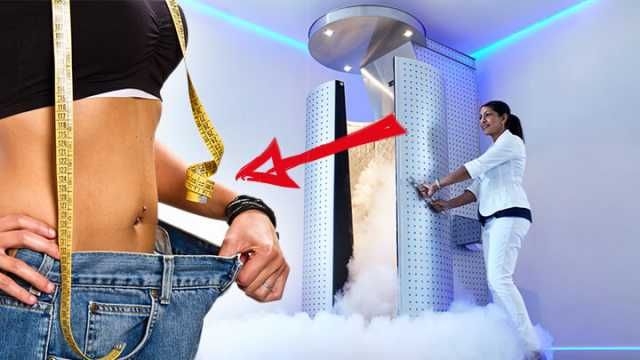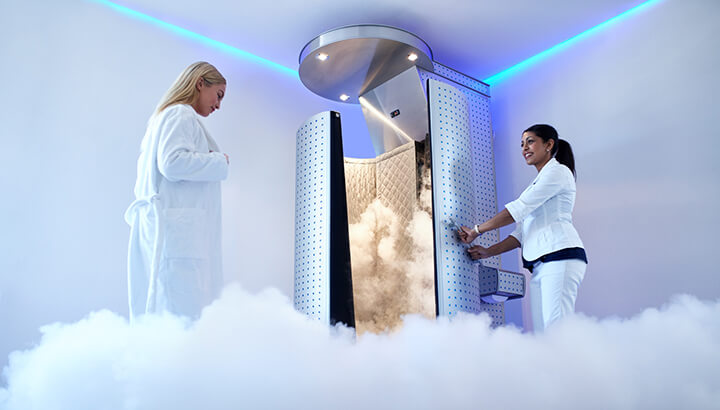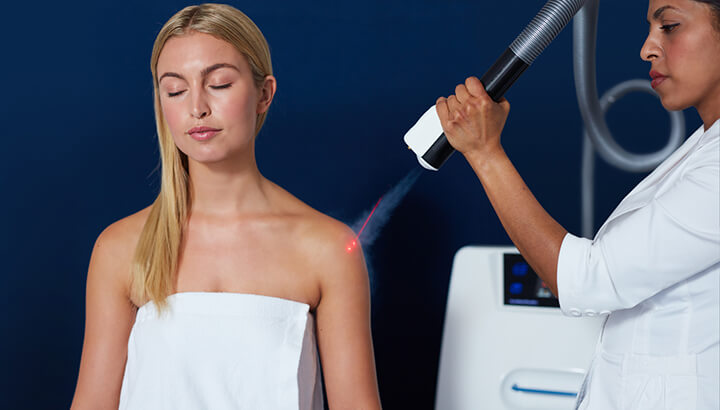
More and more of us recognize the benefits associated with a cleaner, more natural lifestyle. And now, patients are seeking therapy options that are non-invasive, allowing their bodies to heal without the use of drugs. New therapy options are continually being developed, but which options actually help?
For those who have heard of whole-body cryotherapy, you may be wondering, does standing in a freezer truly improve your health? Can this technique help you lose weight, reduce pain or even slow aging? What evidence is currently available to support this therapy — or is it just another fad?
What is cryotherapy?
When you hear the term cryotherapy, you may think of cryogenic. This, of course, focuses on the effect of very low temperatures. You may even remember the rumor that circulated for years regarding Walt Disney being cryogenically frozen — which is, of course, as mythical and fictional as his classic fairy tales.
Based on this understanding, as you’d expect, this therapy involves the use of a cold environment to enhance therapeutic benefits. Although it sounds slightly futuristic, you have more than likely utilized this healing process in the past. Cold application can be used to treat a number of conditions and injuries.
When using an ice pack or a trusty bag of frozen peas, for instance, you will essentially constrict blood blow, reducing any pain or swelling associated with inflammation. In the case of whole-body cryotherapy, individuals are enclosed and confined, as they’re exposed to frigid temperatures.
We all know that cold temperatures can assist us when we’re injured, so would these effects apply to your whole body while essentially standing in a freezer? What evidence supports the use of this therapy and can it really improve all of the health conditions in which it claims?
Related: Freezing As Healing: Inside The Cryotherapy Craze
Does this type of therapy hold any merit?

When it comes to cooling the body for therapeutic purposes, it’s clear that past research supports this theory. Since cold application is useful when treating a wide range of health ailments and conditions, cryotherapy is becoming increasingly popular among athletes. After all, ice packs and cold-immersion baths have been around for years.
Although this therapy has been well-received and is gaining popularity, there’s little evidence that suggests this expensive alternative provides any key additional benefits. As stated in a 2014 review, published in the Open Access Journal of Sports Medicine, whole-body cryotherapy involves short exposure to air temperatures that are below -100 degrees celsius. As you’d expect, athletes use this opportunity to enhance their recovery process — but how effective is this process?
After reviewing ten key reports, with the majority involving a small portion of athletes under the age of 35, it appears that whole-body cryotherapy prevents both subcutaneous and core body cooling. Although a number of small studies found that this therapy improved muscle soreness and subjective recovery, little benefit was documented in terms of functional recovery.
Although no significant adverse effects were found as of yet, the researchers concluded that athletes should continue to utilize less expensive modes of cryotherapy, including the use of ice-packs or cold immersion baths. These methods offer comparable clinical and physiological effects.
Have the health benefits been proven?
Based on the lifestyle of athletes, it makes sense that they would give this new, exciting therapy a shot when aiming to facilitate the recovery process. But about those with chronic pain, or those who would like to lose weight? These individuals are often desperate. Are they being played?
Well, based on current research, all of these potential benefits may just be a bunch of fluff. This “treatment” has not yet been proven. And yet, a long list of promises are often made. These include the use of whole-body cryotherapy for asthma, Alzheimer’s, depression, MS and more. None of these are approved by the FDA.
In fact, according to this administration, individuals need to be aware that the benefits advertised have not yet been proven. And when exposed to excessive amounts of liquid nitrogen, you might actually suffer from a loss of oxygen. You could also get frostbite and injury to your eyes.
Is the treatment helpful or harmful?

If there’s no evidence supporting these claims, why are gyms, spas and wellness centers continuously promoting the use of this therapy?
The short answer here is this: cryotherapy is being viewed by most experts as a hot trend. Both celebrities and the media have hyped this therapy up, which will likely leave many disappointed. For the most part, this “buzz” is likely based on the ways in which high-profile people feel after using whole-body cryotherapy, instead of any true, measurable health benefits.
For those who suffer from pain, for instance, whole-body cryotherapy may offer some level of short-term relief (like an ice bath). However, it is unlikely to offer any real long-term benefits. Although one individual died due to a tragic accident (likely based on overexposure to liquid nitrogen), there’s no evidence that suggests this method of “treatment” is harmful.
With that being said, the largest concern here is that patients may rely on whole-body cryotherapy as opposed to treatments that are known to be effective. This encourages potentially minor health conditions to become worse over time. It’s especially a concern among those who suffer from obesity. False promises could lead to significant future complications.
Should I give whole-body cryotherapy a chance?
No matter which way you slice it, there’s limited research to support current claims. With that being said, many individuals claim that this therapy does improve their overall well-being without any negative effects. So, what do you believe?
The take home here is: at this time, whole-body cryotherapy isn’t a miracle solution. It should not replace other healthy habits, including exercise, rest and a balanced diet. After all, these methods are proven to help you lose weight, reduce symptoms of depression and enhance overall positive health.
Let’s put it this way — if you’d like to try this therapy, ask yourself, why? What is it that you’re aiming to achieve and what are your current options? After all, a two to three-minute session can cost you anywhere from $40 to $100. Think of all the fresh, organic produce you can purchase for $100, providing your body with real nutrition.
Try proven health remedies first

At the end of the day, it appears that this is another “quick” solution without any true merit. Looking for the easy way out, many patients would rather try new, trendy health solutions instead of putting in any real effort.
However, we already know that exercise and diet can significantly improve a long list of health conditions. So stick to eating your greens and jogging with your dog. If you are suffering from a specific health condition, understand the root cause and address it in a holistic manner.
After all, as Plato once said, “The cure of many diseases is unknown to physicians because they are ignorant of the whole — for the part can never be well unless the whole is well.”
— Krista Hillis

